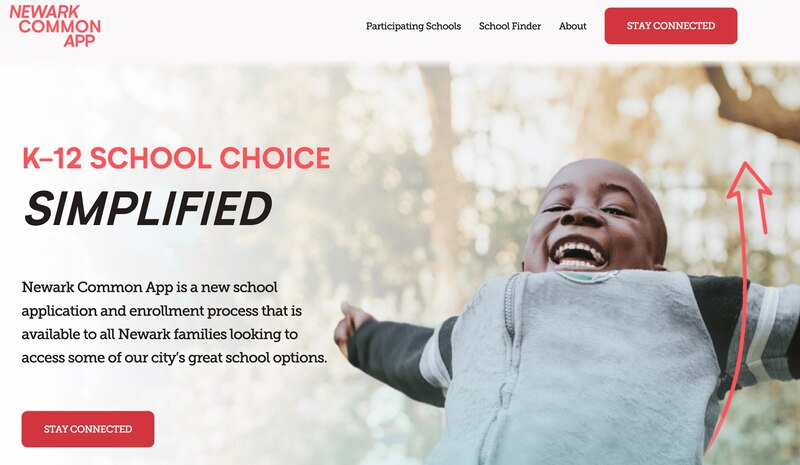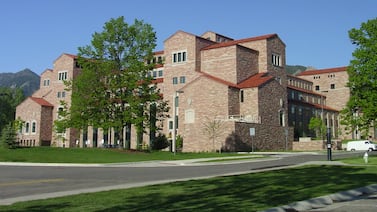Seven Newark charter school networks will not be participating in the Newark Enrolls process this school year, a major shift from a near-decade public and charter school agreement to collaborate on one universal enrollment system for the city’s 60,000 students.
The seven charter networks that will break away from the longstanding pact are Newark’s largest ones, such as North Star Academy, KIPP, Great Oaks Legacy, and Marion P. Thomas, and smaller-scale ones including Achieve Community, People’s Preparatory, and Philip’s Academy.
The networks not only ended ties with the district-controlled system, which could have lasting effects, they’ve also signed on to a new third-party platform, the Newark Common App — altering plans for thousands of families accustomed to one application process for traditional public and charter schools.
A history of issues with the Newark Enrolls platform, including the tightening of rules to apply to a charter school, led to the decision, charter school officials said. Charter schools may be met with some backlash from community members who believe that Newark Enrolls, while flawed, could be improved.
The new platform, spearheaded by the New Jersey Children’s Foundation, a nonprofit charter-aligned organization in Newark with deep-pocketed donors, will open its enrollment window Dec. 1.
Families will need to use that platform to enroll in any of 42 schools that fall under the umbrella of the seven charter networks, which, combined, currently enroll about a third of all Newark pre-K-12 students, or 80% of the city’s charter sector. Other schools, including district public schools, were invited to join the new platform, the website states.
Meanwhile, Newark Enrolls, the system controlled by the Newark Board of Education, will open its window Saturday afternoon, after a school fair from 10 a.m. to 2 p.m at Newark Vocational High School. Families who want to enroll in any of the district’s 60-plus public traditional and magnet schools, or other charter schools that are still with Newark Enrolls, will need to continue using that system.
How a new enrollment platform came to be
Most of the Newark Enrolls features will be available on the Newark Common App, such as mobile functionality, one application for multiple schools, a lottery, and waitlist, according to a press release and interviews with the team behind the new tool. The new platform will also provide a quicker application process with the ability to modify a student’s top choices during the open enrollment window, and more transparency, the team said.
Last school year, the charter-aligned nonprofit initiated a new school look-up tool, My Schools Newark, which let families search any school in the city, regardless of whether its application process was under the Newark Enrolls platform or independently run. The Newark Enrolls search feature only has information on schools that take part in the platform.
At that time, Kyle Rosenkrans, the nonprofit’s executive director who’s also behind the new platform, said his group was not interested in creating a new enrollment system. As Chalkbeat Newark previously reported, he said the group saw a need for a third-party school search tool, nothing more than that.
Over the summer, however, priorities for the group changed when issues surfaced with charter schools not being able to move students from waitlists to available seats in their schools, he said.
Those were just the latest hangups in a series of clashes between the charter schools and district on Newark Enrolls. The universal enrollment system has been a point of contention between the two camps since its origins in 2013. By 2018, charter advocates were preparing to possibly leave the system and start one of their own.
But a year later, Rosenkrans started his nonprofit group with the main goal of serving as a peacemaker and liaison between the charter schools and the public school system, keeping them under one enrollment system.
In recent interviews, Rosenkrans recognized the likelihood that the new enrollment platform may cause some tension between charter schools and the district, and, therefore, neglect a key part of the nonprofit’s mission.
“The interests of families to have a better enrollment experience outweigh some of the risks and the relational strain that may result from this move,” Rosenkrans said in a phone interview with Chalkbeat last month. “That collaboration component was a deep mission component for us, but at the end of the day, we think about what matters most and it’s the interest of educators and children.”
Rosenkrans notified Superintendent Roger León on Tuesday about the new platform with an emailed invitation to join, according to a forwarded copy of the email sent to Chalkbeat.
Prior to issues from this past summer with the waitlist holdups, questionable policy changes created hurdles for families to apply to schools. In the 2019-20 school year, the board removed the option to easily switch schools and added restrictions. Families who ended up enrolled at a school that wasn’t one of their top choices would have to request a transfer for the following school year but those would only be granted under limited circumstances.
Last school year, about 4,000 fewer students applied through the Newark Enrolls system, which some charter and education advocates attributed to the district’s added requirement to show proof of residency during the application process instead of at registration.
“As a school system, our priority is families first so that was the most important thing when making this big decision,” said Stephen Demers, the director of enrollment at KIPP Newark schools, which will join the new platform. “There’s been a lot of enrollment shifts everywhere, but those application numbers certainly went down.”
What is Newark Common App?
Though the nonprofit “fundamentally believed in preserving the collaboration, we wanted to be there as a safety net” by creating a contingency plan for an alternative platform, Rosenkrans said in an interview. As it turned out, the new platform had been in the works for 18 months, he said, so when issues sprang up again over the summer, the foundation was ready to move forward with it.
“It was a very delicate operation for us,” he added.
The new tool has the same developer as the My Schools Newark search tool. Avela, the company behind both platforms, has also designed enrollment tools for Philadelphia’s early childhood centers, Seattle Public Schools, and New Orleans Public Schools. The developers say the algorithm for its enrollment platforms is designed to promote equity.

“The most important thing for families to understand is that there’s no reason to overthink the system and there’s no gaming or strategy to it,” said Greg Bybee, the cofounder and chief executive officer of Avela Education and part of the team behind the Newark Common App. “It’s designed to be easier for parents and guardians to enroll in programs for their kids and certainly meant to be more equitable and give everyone an equal chance.”
Sonali Murarka Soi, Avela’s enrollment specialist and client development lead, said the tool will prioritize students with disabilities, individualized education plans, students who are English language learners, low-income, and families who are in transitional housing or who are homeless.
“The goal overall is to have every school for each of those populations come as close to the kind of community level percentage as possible,” she said. In other words, she said, “the algorithm” will work to have each school representative of the community.
“So a school that was, let’s say, over-represented, compared to the general population, in one subcategory, such as English language learners, wouldn’t necessarily be prioritizing more English language learners,” Murarka Soi said. “But another school that is far below the representative percentage for the category would prioritize that group of students.”
As the new enrollment cycle kicks off this fall and early winter, charter schools under the new platform will plan in-person enrollment events to help answer families’ questions and guide them through the process, said Sarah Yan, New Jersey Children’s Foundation executive director-in-residence. She added that the total time for the new application process will be about 10 minutes.
“You don’t need anything really. You can sit down at a computer or use your mobile device and complete the application in one sitting,” Yan said, adding that it will be available in the top 20 languages spoken in Newark, including Portuguese and Spanish.
“The user experience is what tilted the scale toward joining the Newark Common App,” Demers said. “If we’re doing this change, we want to make sure this process goes smoothly for prospective families.”
The foundation also promises to publicly issue reports with analytics about outcomes from the platform and to have ongoing feedback sessions with families to improve it, according to a press release.
The cost for the new system was not disclosed, only that the marketing campaign for its launch was in the “low six-figure” range. But long term, schools that are part of the new platform will need to pay $8 to $10 per student in order to keep it sustainable, and in addition to philanthropic donations through the foundation, Rosenkrans said. If the district and other schools join the platform, that cost per student would drop, he said.
Last year, under Newark Enrolls, 82% of kindergarten families were matched with their first choice schools, the website states. In 2018-2019, a parent survey published by the district showed that most parents found the system easy to navigate. But more recent parent feedback, which would reflect changes since that survey was taken, either has not been collected or made publicly available.
Questions to the district’s spokeswoman were not immediately answered.
At a school board meeting last month, León listed the deadlines coming up for Newark Enrolls, which uses SchoolMint to run the application process.
“This is the fairest way to determine where children get their choices of instructional program in this city,” León said at the Oct. 27 meeting.
Catherine Carrera is the bureau chief for Chalkbeat Newark, covering the city’s K-12 schools with a focus on English language learners. Contact Catherine at ccarrera@chalkbeat.org.





